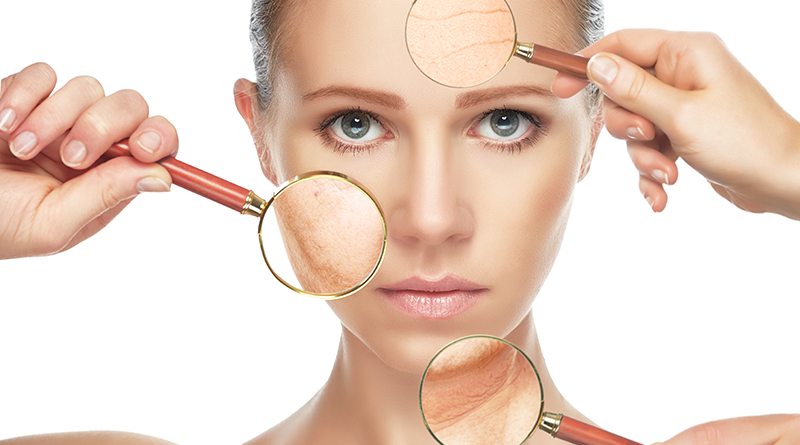Is 55 the new 40?
Experts in aging say yes, men and women are looking, feeling younger
By Lou Sorendo

Is 55 the new 40? Is it true people don’t look or feel as old as someone the same age a generation or two ago?
For Minjung Seo, associate professor at SUNY Oswego’s department of health promotion and wellness, the answer is yes.
“First of all, we live longer,” she said.
The life expectancy of Americans born in 2012 was 78.9 years, which was the highest it had ever been.
“Obviously, the life cycle has been extended. Therefore, people aged 55 today do not feel their age the same as people aged 55 did in 1940,” she said.
Seo, who holds a PhD degree in health promotion and gerontology from Purdue University and currently teaches wellness and aging, noted people view aging more positively than before.
“Positive perceptions of aging are significantly associated with favorable outcomes, such as higher well-being, better health or longevity,” she said.
According to the English Longitudinal Study of Ageing, older people typically feel younger than their chronological age and those who feel younger than their actual age have reduced mortality, Seo said.
“In other words, how you feel your age affects your mortality,” she added.
Also, another study conducted by the National Council of Aging and the Harris National Survey showed 51 percent of older adults aged 65-74 and 33 percent of adults aged 75 and older perceived themselves as middle-aged or younger.
“This certainly is evidence that many older adults are redefining old age as beginning later in the life cycle,” she said.
According to Seo, there is tangible evidence indicating people are indeed operating on a younger level — whether it is physically, emotionally or mentally — than their predecessors.
The next level
Biotechnological advances bode well for increased longevity in the future.
These include pharming, which is the process of genetically modifying plants and animals so that they produce substances that may be used as pharmaceuticals. An example is genetically modifying bananas or tomatoes to create a vaccine against hepatitis B.
Proteomics, which is genetically modifying bacteria, plants and farm animals to produce desired proteins, is also prevalent. With this technology, doctors can determine what protein a patient needs to recover from a given illness and then the proteomics engineers fabricate the needed protein molecules, Seo said.
“In addition, there are even more advanced anti-aging medicines such as artificial intelligence, nanotechnology, nanobiotic red blood cells and nanobiotic white blood cells,” she said.
Also, there are non-medical related important factors affecting longevity, beauty and youth, Seo noted. These include proper diet, caloric restriction, adequate exercise, stress management, detoxification and proper care of the brain.
Seo said the best strategy to live up to the maximum attainable age and looking and feeling younger is to “keep our bodies in good health until medical advances such as biotechnology and nanotechnology revolutions find full expression,” she said.
People are also engaging in more fulfilling careers as opposed to their predecessors, although not necessarily leading to a healthier and less-stressful lifestyle.
According to several studies, members of the younger generation are more focused on career growth opportunities, job satisfaction and work-life balance. This is in addition to more traditional criteria when they search for jobs, such as salary, benefits and job security, and they put more value on achievement and satisfaction from their job, Seo said.
“People are engaging in more fulfilling careers compared to their predecessors,” which ideally, may contribute to a healthier lifestyle, she said.
“But in reality, this does not seem to contribute to a healthier lifestyle because of highly competitive job opportunities with an increased population, unstable economic conditions and less physically demanding jobs,” she said.
She said the trend of seeking fulfilling careers will discontinue unless economic conditions improve.
“Otherwise, people may tend to put more value on salary, benefits and job security than on career fulfillment,” she noted.
Seo said a fundamental principle of anti-aging medicine is that aging can be regarded as a disease, an enemy.
“As a result, anti-ageists want to fight it with all the tools and weapons at their disposal,” she said.
Most commercial anti-aging products such as cosmeceutical interventions (skin treatment), Botox injections, microdermabrasion, chemical peels, collagen injections and plastic surgery seem to focus on a younger-looking appearance, making people who use them look and feel younger, she said.
“However, I don’t think those products actually slow down the biological aging process of the body itself, and as yet there is no scientifically proven commercial product to slow down the aging process,” she said.
Counterpoints apparent
Certain societal factors, however, are testing the concept that 55 is the new 40.
A longitudinal cohort study comparing younger generations to older generations showed the prevalence of obesity was higher in the younger generation at an earlier age, Seo noted.
Members of the baby boomer generation were more obese, and became so at younger ages than their predecessors, she said.
“It seems the benefits of increased education and income and healthier lifestyles were almost counterbalanced by the effects of increasing body-mass index,” Seo said. “Obesity is an epidemic in America and childhood obesity is a huge health issue in America as we know.”
Also, more than 5 million college students struggle with mental health problems, such as anxiety and depression, according to the National Alliance on Mental Illness. A recent study showed the level of anxiety of average high school students is higher compared to the average level of anxiety in psychiatric patients in the early 1950s.
“Considering the results of these studies, it is difficult to believe that people are operating on a younger level than their predecessors even though they may perceive differently,” she said.
The education factor
There have been a number of studies providing evidence that physically, people are healthier than their parents and grandparents were at the same ages, according to Laura H. Brown, professor and chairwoman of human development at SUNY Oswego and coordinator of its gerontology minor.
This particularly holds true for well-educated people.
“People who have graduated from college are more likely to understand health better and get regular exercise,” she said.
Also, they tend to be working in occupations that not only challenge them physically, but also mentally, she noted, which is a significant aspect of the staying-young process.
In order to stay sharp mentally, people need to challenge themselves, she said.
“If you are standing on an assembly line and doing the same exact tasks over and over again, that’s not challenging,” she said. “So having an occupation that taps into different parts of your brain and different skill sets are going to keep those neuro pathways much healthier for much longer.”
Brown said a trend is an increase in sunscreen use, a key indicator that people are taking better care of their skin and avoiding skin cancer, regarded as a significant killer in previous generations.
“All medical advancements have really improved our health status,” said Brown, including immunizations, better cancer treatment, and better detection of health problems before they get too serious to be able to treat.
Medical advancement is led by immunizations, such as the one for pneumonia.
Pneumonia is one of the top-10 killers of people over 65. “If you have an immunization that prevents you from getting at least some forms of pneumonia, it gives you a fighting chance,” she said.
In the past, for someone over the age of 80 who fell and broke his or her hip, “that was the beginning of the end,” Brown said.
“If you broke your hip, then you were bed ridden and risked contracting pneumonia, and that is what killed you,” she said.
“That’s not the case anymore. People do not go on bed rest and instead have surgical implants of plates and screws and are walking within three days of breaking their hip,” she said.
How long will you live?
Some things experts look for in terms of predicting how long one will live or how well they will age are both physical and mental, she said.
“Having work and activity that are meaningful to you is going to keep you motivated to continue,” Brown said.
“Another big advancement we’ve seen is people who have positive, supportive relationships and connections that are positive to other people live on average seven years longer than people who don’t have those relationships,” she said.
Another key factor to aging is sleep.
“Sleep gets a little more difficult as we get older, particularly among women after menopause,” she said. “The symptoms of menopause sometimes mess with your ability to get deep sleep.”
However, once those symptoms are under control, “you should be getting seven to eight hours of sleep ideally,” she noted.
She said researchers note if a person gets shorter periods of sleep every night, over time that decreases the length of one’s DNA.
“People who get six or fewer hours of sleep a night on a regular basis have shorter telomeres that impact the speed of your physical aging,” she said.
A telomere is a compound structure at the end of a chromosome.
“So shorter telomeres equal shorter life spans and longer sleep times prevent telomeres from getting shorter,” she said.
As of 2011, life expectancy for men in the United States was 76 and for women, it was 81.
However, in that same year, the obesity rate in the U.S. was 36.5 percent compared to 15 percent in 1978.
“Obesity is going to be the tell-tale for the next generation,” she said. “If we can get obesity rates down, that’s going to be a huge factor, particularly since obesity is very strongly connected to poverty rates.”
“If you only have a certain amount of money for food, you are not going to be able to afford fresh fruits and vegetables, and lean cuts of meat, poultry and fish. You are going to go for the processed, filling comfort food. That is the stuff that contributes to obesity,” she said.
Poverty is quite evident when comparing life expectancies of different ethnic groups.
In 2011, the two ethnic groups in the United States that had the highest rates of poverty are Native Americans and African Americans.
They also had the lowest life expectancies: 74.6 for African Americans and 76.9 for Native Americans.
Meanwhile, Asian Americans had a life expectancy of 86.5 percent.
“Asians live longer in the United States than any other ethnic group. But Asian culture emphasizes a balanced diet. They don’t keep eating after they are full, and they have that centered life where they are meditating, managing stress, exercising and have meaningful work activities,” she said.
Caucasians, meanwhile, have a life expectancy of 78.9 while Latin Americans are at 82.

